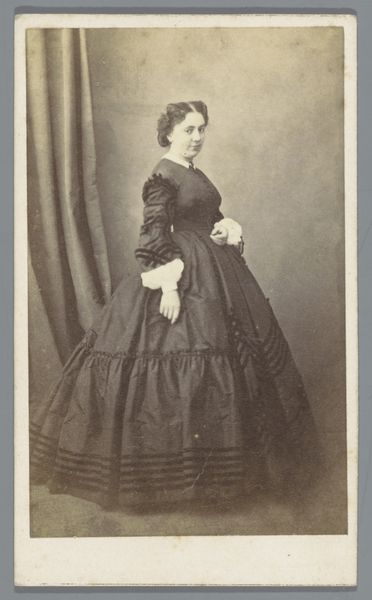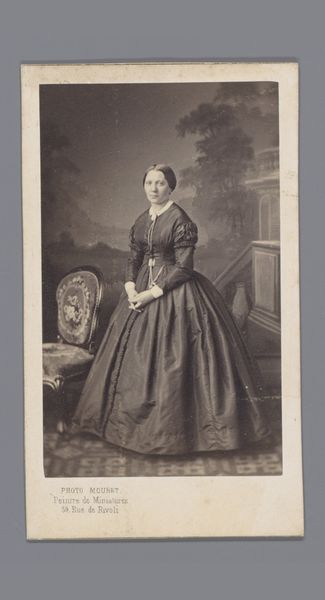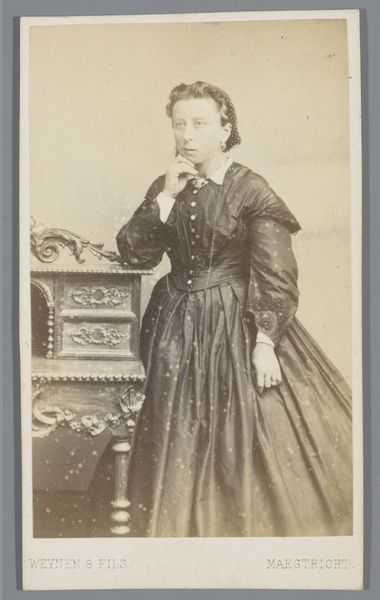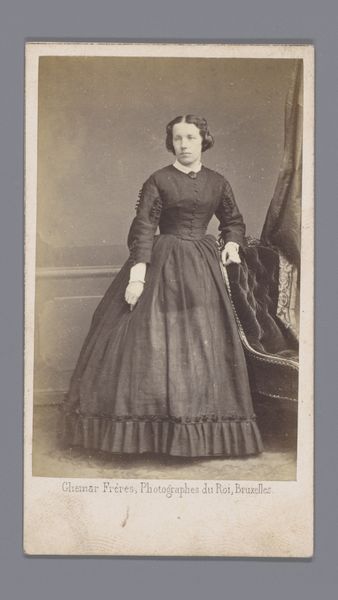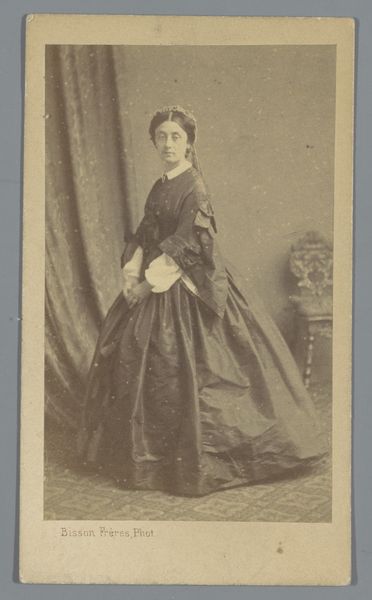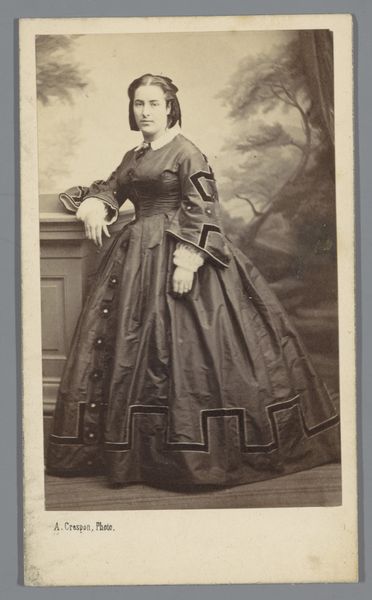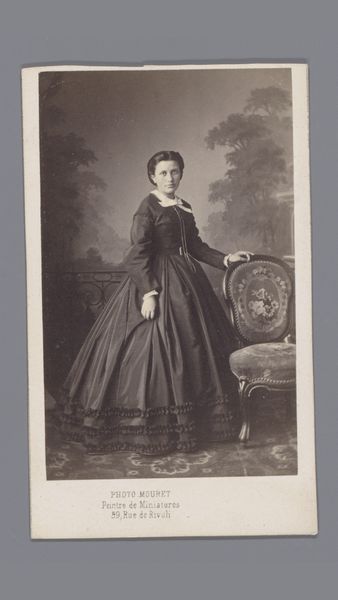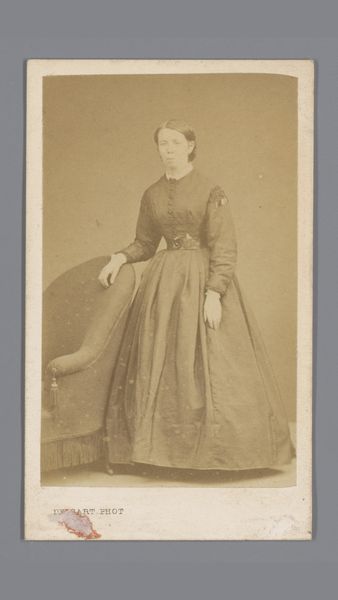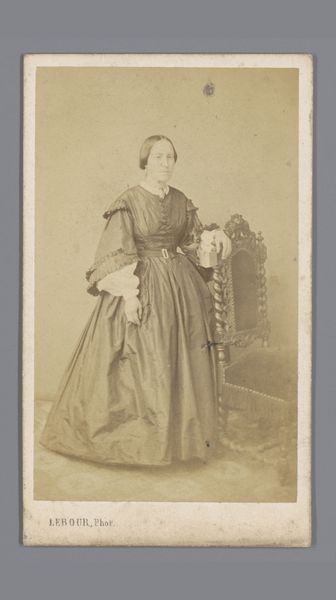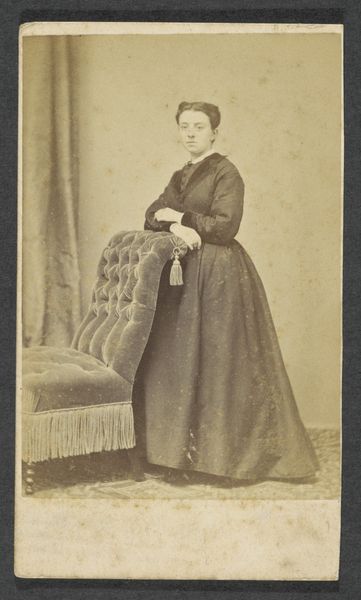
photography, albumen-print
#
portrait
#
photography
#
framed image
#
19th century
#
albumen-print
Dimensions: height 105 mm, width 63 mm
Copyright: Rijks Museum: Open Domain
Editor: Here we have an albumen print from between 1863 and 1875 by Auguste Charles Lyon, titled 'Portret van Elise Gourdine'. It's such a classic pose for the era. There's a stillness to it, a sort of quiet dignity, but also, I find myself wondering what Elise was really like. What do you see when you look at this portrait? Curator: You know, what strikes me is the subtle dance between presentation and reality. The heavy fabric of her dress, almost swallowing her whole, suggests a certain societal expectation, a visual armor. And yet, if you look closely, there's a fragility in her eyes. Almost a hint of… mischief, perhaps? Photography at that time wasn't exactly candid. How much of ‘Elise Gourdine’ are we really seeing, I wonder? Does the stiff pose speak of constraints, or could it equally hint at a determination to control her own image in this novel technology? Editor: That's a really interesting point about control, especially with early photography. It’s not just snapping a picture on your phone, is it? There's intention. Curator: Precisely! The photographer, Lyon, undoubtedly had a vision, a narrative he wanted to create. But so did Elise, I suspect. Think about it: she chose the dress, the jewelry – however constrained by the fashion of the time, there were choices to be made. The slightly self-aware way she holds her hand against that ornately carved table speaks of a deliberate construction of self. Editor: I never thought about it that way. It is a negotiation then between her and the artist… Curator: Indeed! It’s that push and pull that makes portraiture so endlessly fascinating. What story are *we* telling ourselves as we look at her all these years later? We’re adding another layer to that negotiation now. I wonder what Elise would think. Editor: Food for thought! I’m going to be looking at every portrait differently from now on. Thanks.
Comments
No comments
Be the first to comment and join the conversation on the ultimate creative platform.

